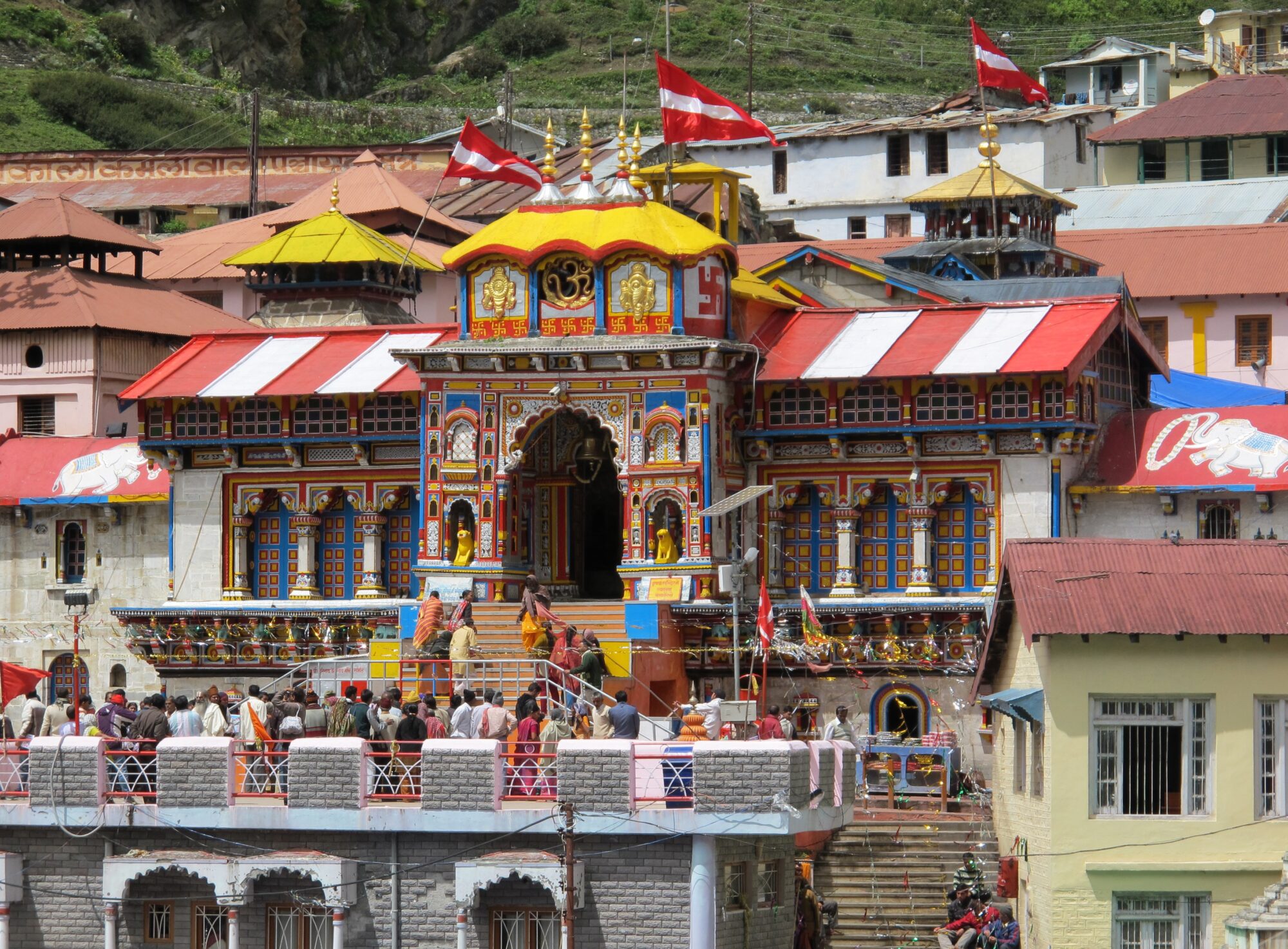Nestled in the lofty Himalayas of northern India, the Badrinath Temple is a Hindu pilgrimage site that has captivated the hearts and minds of millions of devotees for centuries. Situated in Badrinath in Uttarakhand, the temple is part of the revered Chardham Yatra, including the sacred shrines of Yamunotri, Gangotri, and Kedarnath. The Badrinath Temple is not only a place of religious significance but also shrouded in fascinating legends and stories that add to its mystique and allure.
Its origin story is one of the most famous legends associated with the Badrinath Temple. According to Hindu mythology, the temple is dedicated to Lord Vishnu, who is believed to have meditated at this spot for thousands of years in a yogic posture known as “Badri” to protect the region from evil forces. The word “Nath” means Lord or God; hence the name “Badrinath” is derived from the combination of “Badri” and “Nath.” Lord Vishnu is believed to reside in the temple and blesses the devotees who visit with a pure heart.
Another intriguing legend relates to Lord Vishnu’s idol enshrined in the Badrinath Temple. The idol is made of black stone, called Shaligram, and is believed to have been self-manifested or Swayambhu, which means human hands did not create it. Legend has it that the idol was discovered by the great saint Adi Shankaracharya, who is credited with establishing the Badrinath Temple in the 9th century. Adi Shankaracharya is believed to have found the idol of Lord Vishnu while wandering in the Himalayas and installed it in the temple to spread the message of Hinduism.
Another captivating legend associated with the Badrinath Temple is the story of the river Alaknanda, which flows by the temple. It is believed that the river was once a celestial nymph named Alaknanda, who was transformed into a river by the curse of the sage Narada. According to the legend, Alaknanda was performing penance to seek Lord Vishnu’s blessings, and when he appeared before her, she was enamored by his divine form. However, Lord Vishnu rejected her advances and transformed her into a river, allowing her to flow by his side eternally. Devotees believe that taking a ritual bath in the icy waters of the Alaknanda River before visiting the temple cleanses them of their sins and purifies their souls.
The Badrinath Temple is associated with the famous Hindu epic, the Mahabharata. It is believed that the Pandavas, the protagonists of the Mahabharata, visited Badrinath on their journey to the Himalayas in search of Lord Shiva’s blessings.
Apart from its legends, the Badrinath Temple also holds immense religious and cultural significance. It is one of the holiest temples in Hinduism and is considered one of the four Char Dham, which are believed to be the most sacred pilgrimage sites in India. The temple attracts millions of devotees worldwide every year, especially during the summer months of May to June when the region experiences favorable weather for pilgrimage.

